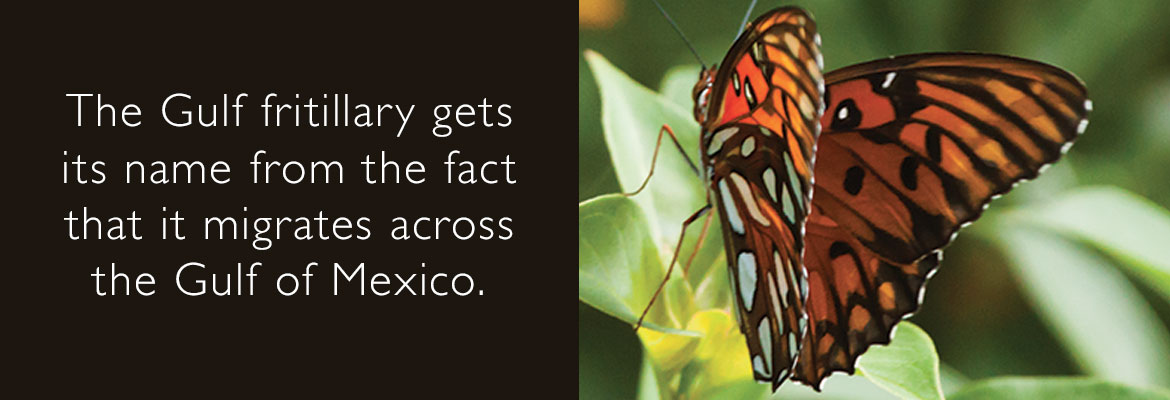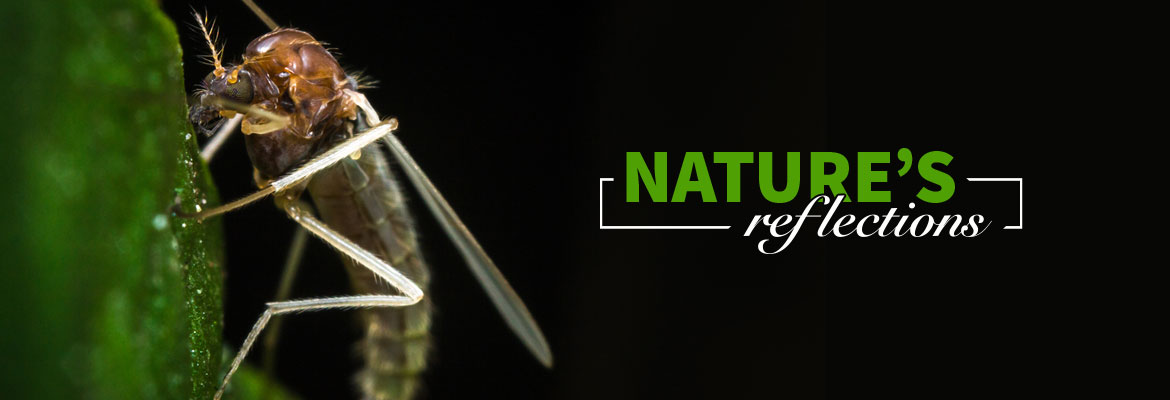Nature’s Reflections – Florida’s Gulf Fritillary
Florida’s Gulf Fritillary
A member of the longwings, brush-footed family
The Gulf fritillary (Agraulis vanillae) is a striking, bright orange, medium-sized butterfly common to Florida. Its wingspan is less than three inches. Its forewings are long and fairly narrow, orange above with black markings, and three black-encircled white or silvery spots at the front edge of the forewing. These spots are visible above and below. Underwings are pale brownish orange, with many large, iridescent silvery markings.
The Gulf fritillary gets its name from the fact that it migrates across the Gulf of Mexico. In fact, its range extends from South America north through Central America, Mexico and the West Indies to the southern United States.

The Gulf fritillary uses the passion flower vine for its larval food plant. Males patrol for females, who lay tiny yellow eggs on the host plant. The eggs usually hatch within a few days. The Gulf fritillary is considered a sub-tropical butterfly. This means it slows down when air temperatures drop and speeds up when it gets warmer regardless of what stage it is in. For example, an egg may hatch within three days in the heat of summer, but may take longer in cold weather.
Column & photo by: Sandi Staton





